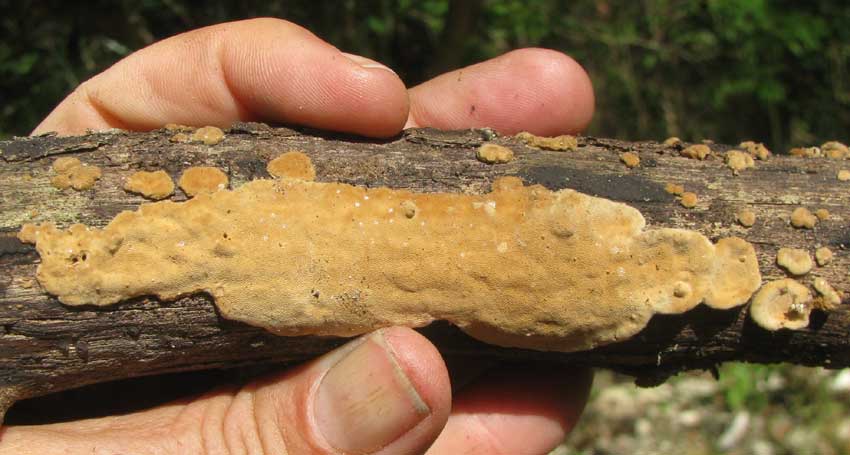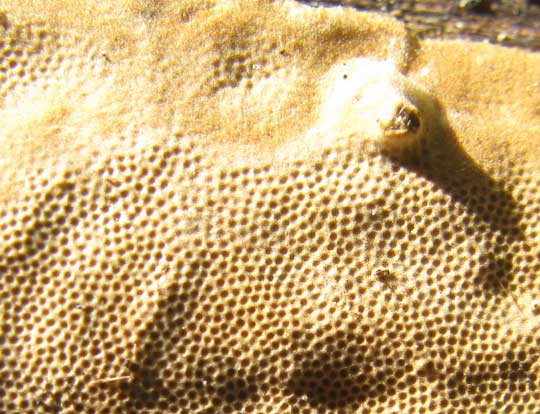Excerpts from Jim Conrad's
Naturalist Newsletter

from the December 11, 2011 Newsletter issued from Hacienda Chichen Resort beside Chichén Itzá Ruins; limestone bedrock; elevation ~39m (~128ft), N20.675°, W88.569°; central Yucatán state, MÉXICO
PHYLLINUS, THE WOOD-DECAYING FUNGUS
With its long dry seasons when entire months can pass without a single drop a rain, the Yucatán just doesn't support as many fungi as other more humid areas. Still, if you look around, you can find a few. For example, look at what I found encrusting the bottom of some firewood stacked too long outside at the top of this page. At first I thought it was another slime mold, but then I looked much closer and saw what's shown below:

Slime molds don't produce lower surfaces so regularly ornamented with pores as this. However, there's a whole huge group of fungi that do, known commonly as the polypores. However, polypore fruiting bodies normally have stems or attach to wood at their sides, forming a kind of shelf. This fungus was attached at its top, with its pores pointing downward, so that spores could fall from them.
Nonetheless, in a general and non-technical way, it is a polypore, albeit a remarkable one because of the way it encrusts woody lower surfaces. I think that it's the genus PHELLINUS, maybe Phellinus punctatus, but other similar Phellinus species exist, and some are as cosmopolitan in distribution as this one.
Phellinus fungi are wood decayers. Ours is obviously decaying dead wood, but Phellinus punctatus has been noted occasionally infecting live trees, causing plant pathologists to refer to it as "a true canker rot."
I've not seen it on any living plants here. However, the firewood pile from which I retrieved the stick was full of it.